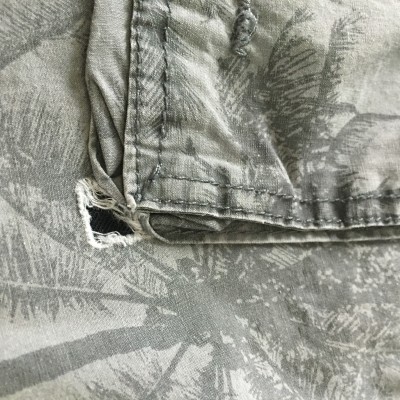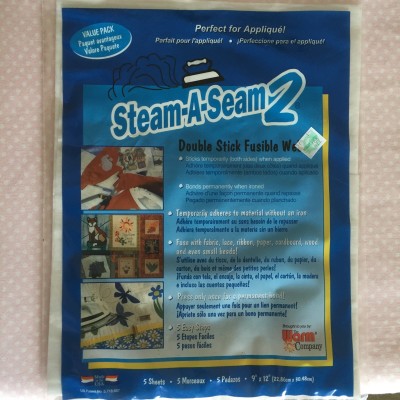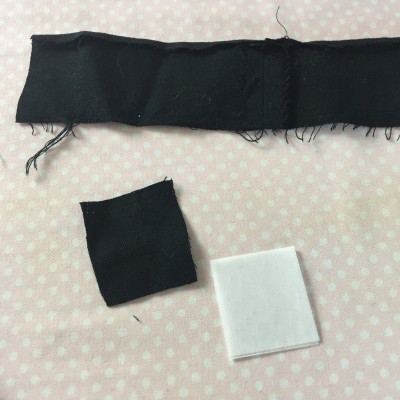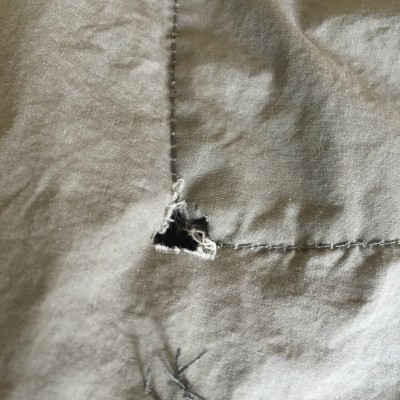
You are going to thank me for this post!
I find myself often repairing rips and tears in clothing. It started about when my nephew turned five! Back then, he would rip the edge of the pocket of his jeans or tear the fabric on his knees.
Now I make this repair about once or twice a month for myself as well as other family members. It takes about 10 minutes and doesn’t even require sewing!

Here is what you need:
Scissors
A scrap piece of fabric that will show through the hole or fabric to support a ripped area. It needs to be about a half inch to an inch larger than the hole all the way around. I call this the base fabric.
Double stick fusible webbing (I use Steam-A-Seam 2)
Iron, with steaming capabilities

Press the fabric that has the hole. Cut a piece of double stick fusible webbing, and cut a piece of base fabric a bit larger than the webbing. For a small hole (about the size of a quarter), I like to have about a half inch all the way around the hole. For a larger hole, I like an inch.

If you are mending a rip or pin hole, proceed with the package directions. If there is literally a hole that will show the base fabric, I cut away the double stick fusible webbing so that it won’t melt on my ironing board or create a mess.

The package directions usually involve ironing over the repair for 30 seconds to melt the double stick fusible webbing. It may say steam; just follow the directions for the product you purchase.
Be very careful not to get the double stick fusible webbing on your ironing board or to have a scrap of it end up on your ironing board. It will melt onto other fabrics and ruin them or stick them to your ironing board cover.

This is the same technique you can use to hold something in place for machine stitching around an embroidery or, one time, I added stability to a fraying hem with this process.
With my nephew, sometimes I would mend the holes in his jeans with a cotton accent fabric (striped, print, etc.) and other times, with a fabric that would blend. You can choose whether to make your repair a fashion statement or a secret!
This really is an easy way to repair rips and tears! And you don’t even need to own a sewing machine.
